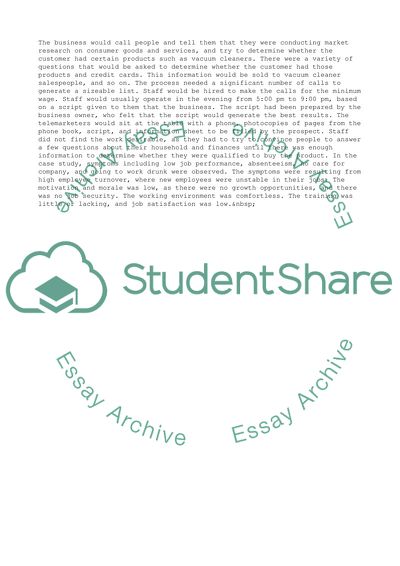Cite this document
(Organizational Behaviour in Telemarketing Field Case Study, n.d.)
Organizational Behaviour in Telemarketing Field Case Study. Retrieved from https://studentshare.org/business/1724720-organizational-behavior
Organizational Behaviour in Telemarketing Field Case Study. Retrieved from https://studentshare.org/business/1724720-organizational-behavior
(Organizational Behaviour in Telemarketing Field Case Study)
Organizational Behaviour in Telemarketing Field Case Study. https://studentshare.org/business/1724720-organizational-behavior.
Organizational Behaviour in Telemarketing Field Case Study. https://studentshare.org/business/1724720-organizational-behavior.
“Organizational Behaviour in Telemarketing Field Case Study”, n.d. https://studentshare.org/business/1724720-organizational-behavior.


